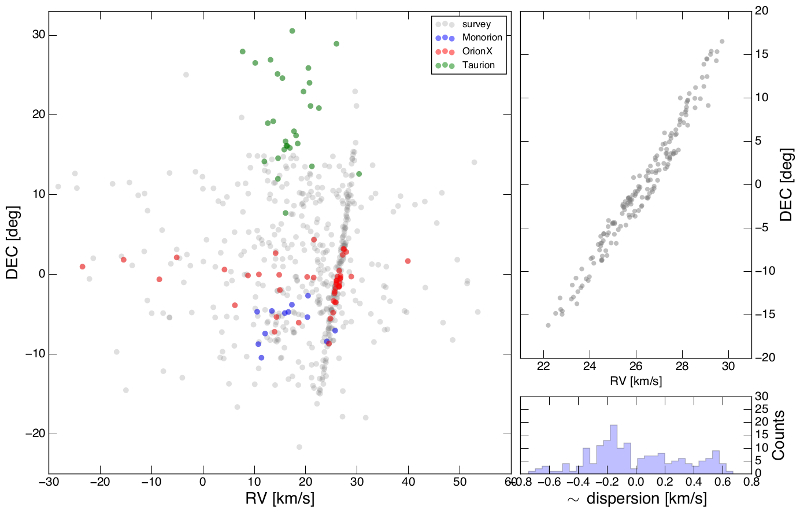| EPoS Contribution |
|
Radial Velocity Survey of the Complete Orion Star Forming Region
Karolina Kubiak U Vienna, Vienna, AT | |
| Massive stars are bright and short-lived objects. Therefore they are relatively easy to observe and remain close to their birth place. We carried out a large, concerted spectroscopic program in order to obtain a homogeneous sample of massive stars in the Orion Star Forming Region. With this, we want to investigate the differences in distributions of radial velocities and the spatial distribution of the various groups. The previous kinematic studies were focused only on certain sub-regions in the Orion complex. All of them revealed significant radial velocity dispersions within chosen sub-populations. None of the former radial velocity studies in this region have been performed based using large homogenous samples, which is crucial for inferring the star formation history. We have chosen a sample of 729 bright objects including all massive OB stars in the Orion. This sample is large enough to allow characterization of the various sub-groups, as well as to study the parameters of selected objects. The survey targeted the entire complex and covered a contiguous area of about 300 deg2, making it the largest spectroscopic survey of massive stars ever performed for this important region.Making use of the superb stability of high-resolution spectrometers, we obtained precise radial velocity measurements. Accurate measurement of the radial velocities of the stellar population allows us to infer its kinetic properties, distinguish between sub-populations, and to determine membership. Finally with addition to other data help us to construct the most accurate star-forming history of this region.Preliminary results revealed an extremely large and dynamically cold structure never reported before. The structure extends over to at least 30 deg in declination which corresponds to more than 100pc if we assume a distance of 400pc or can be much larger if the structure lies in front of the Orion Molecular Clouds. Our previous survey did not cover the region in dec > 15 or dec < -15 well enough for us to be able to conclude about the ends of this astounding structure. The structure itself presents almost 10km/s gradient in radial velocity from south to north with very small internal dispersion of ~0.2 km/s. | |
 | |
| Caption: Heliocentric radial velocities distribution plotted against the declination. | |
| Collaborators: J. Alves, U Vienna, AT H. Bouy, U Bordeaux, FR K. Strassmeier, AIP, DE |
Suggested Session:
High-mass star/star cluster formation |

